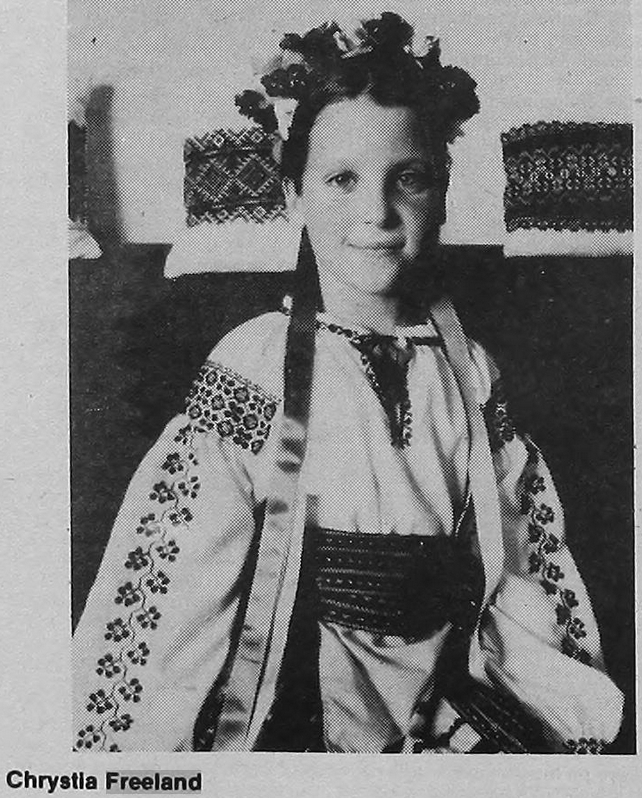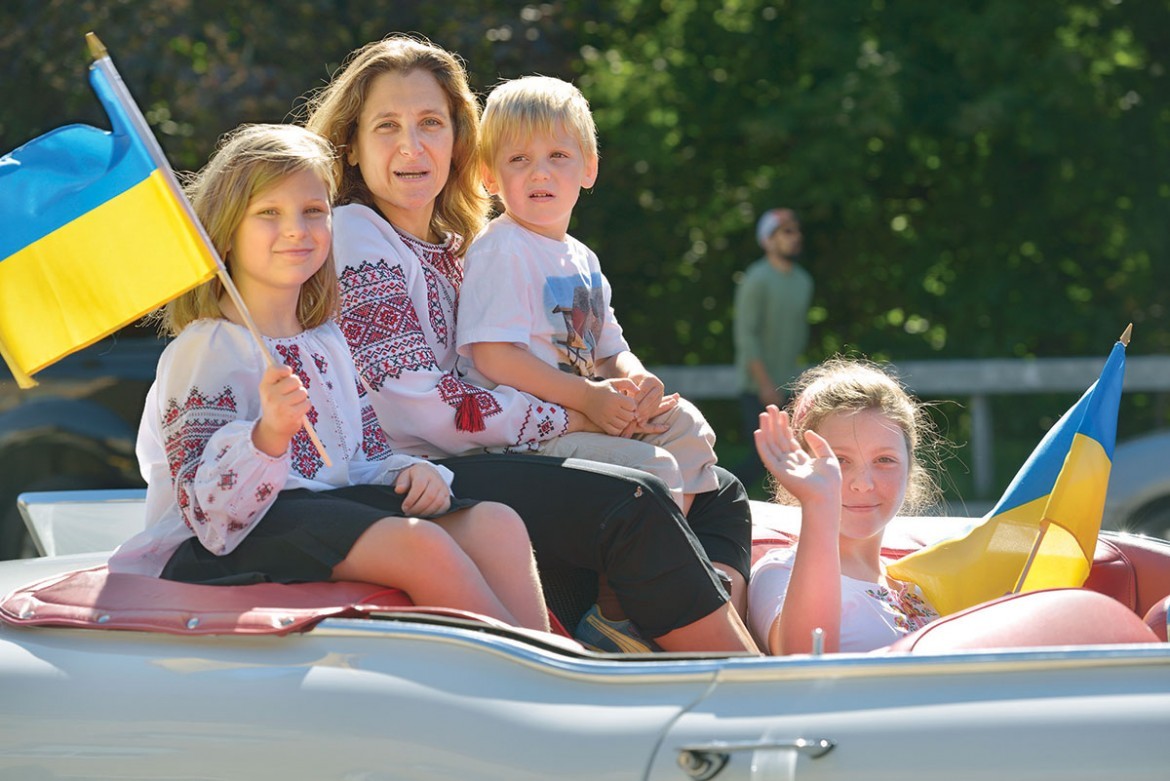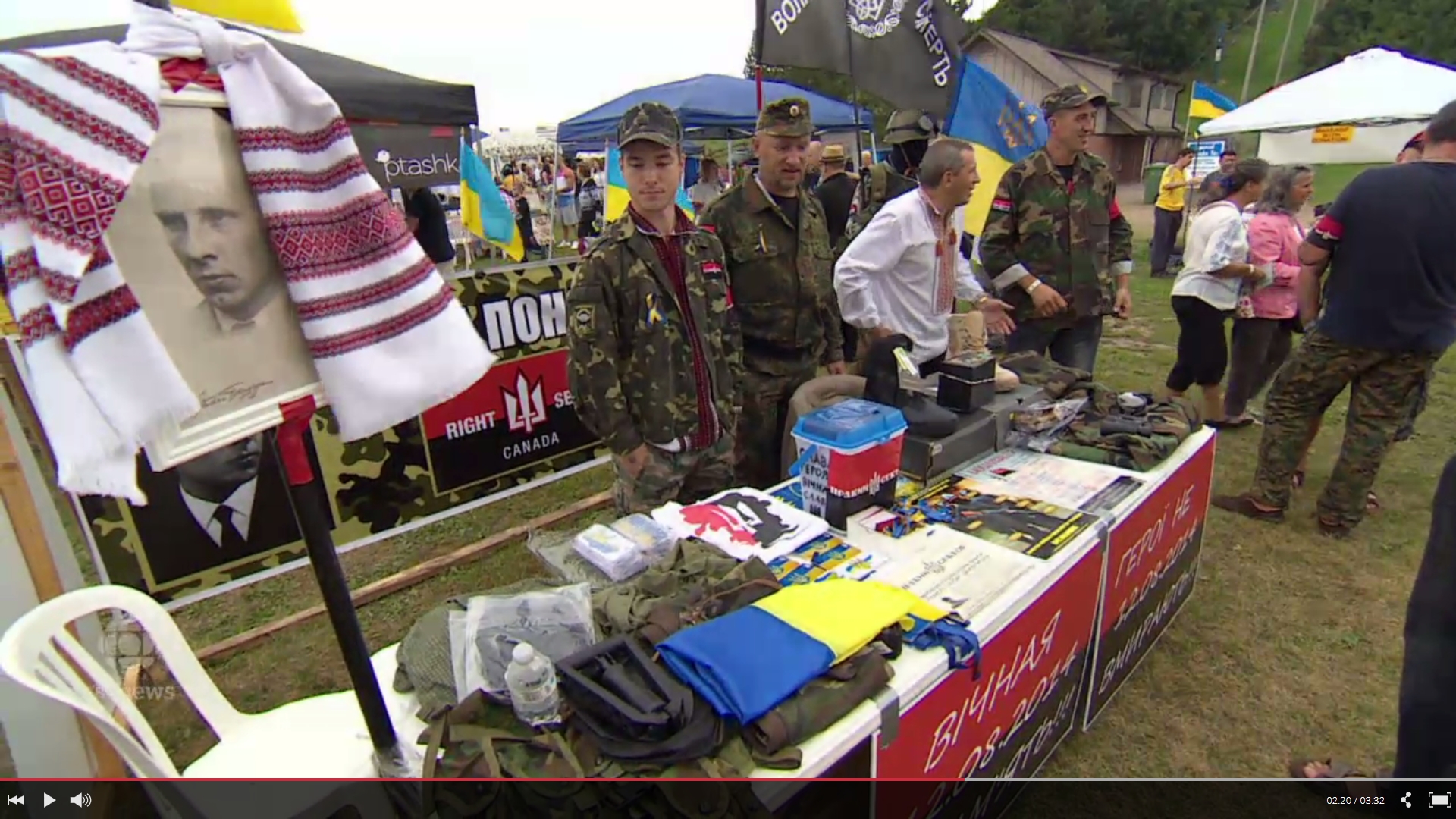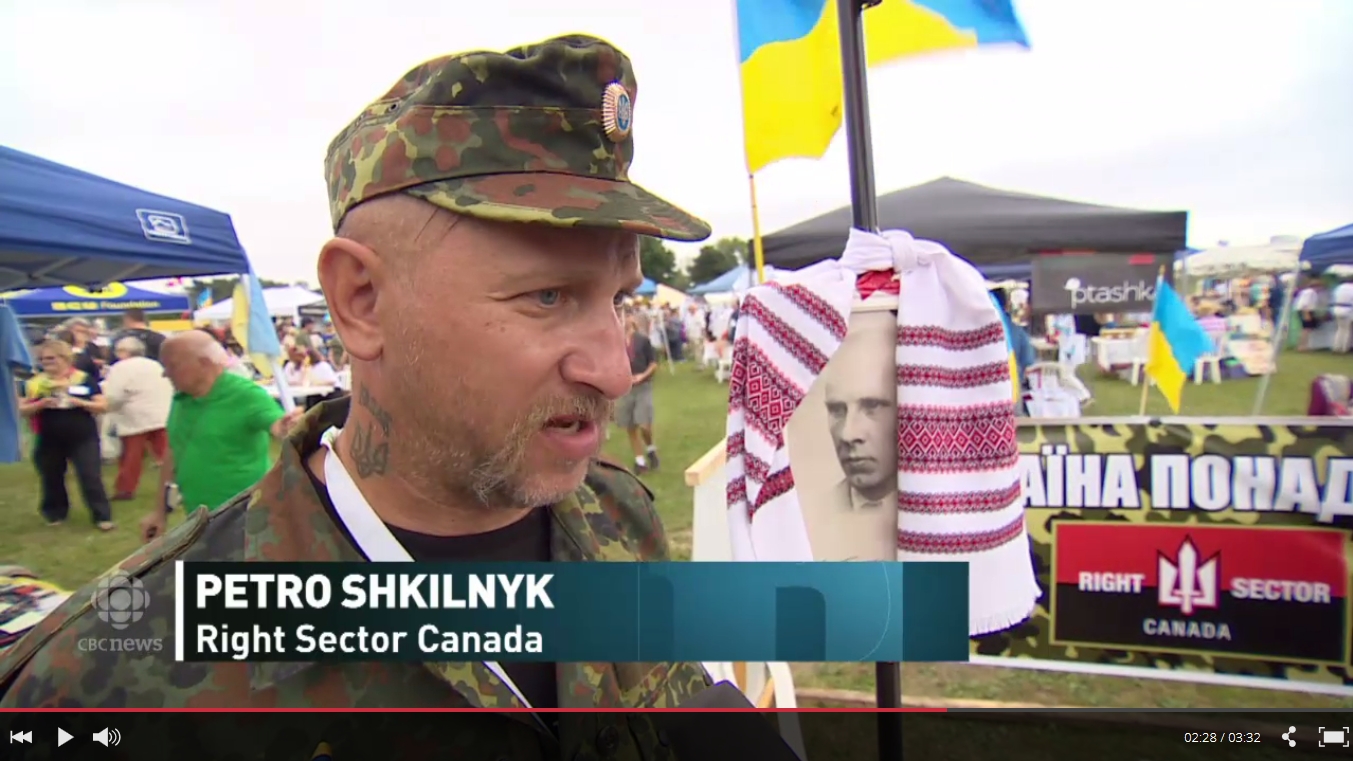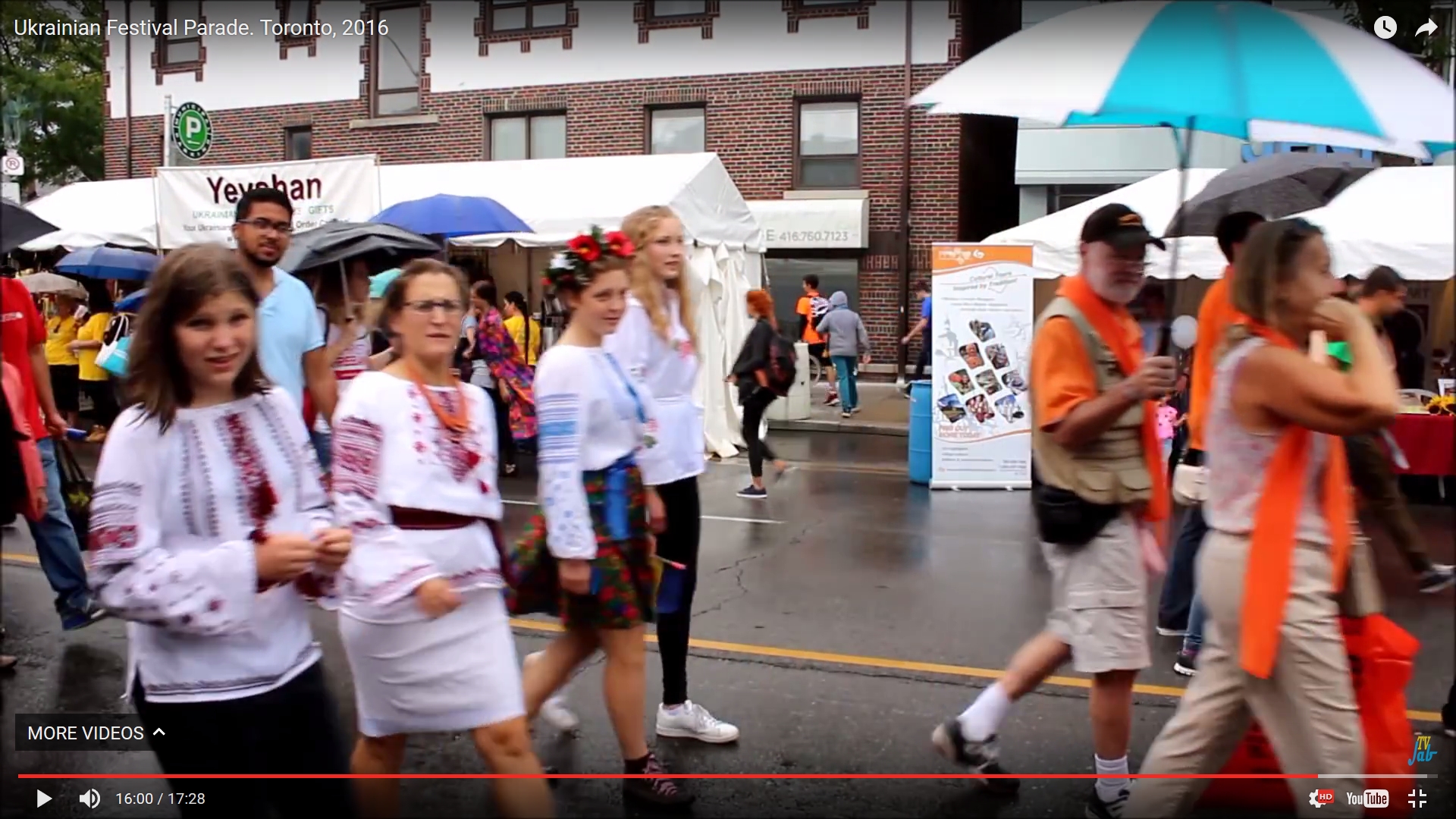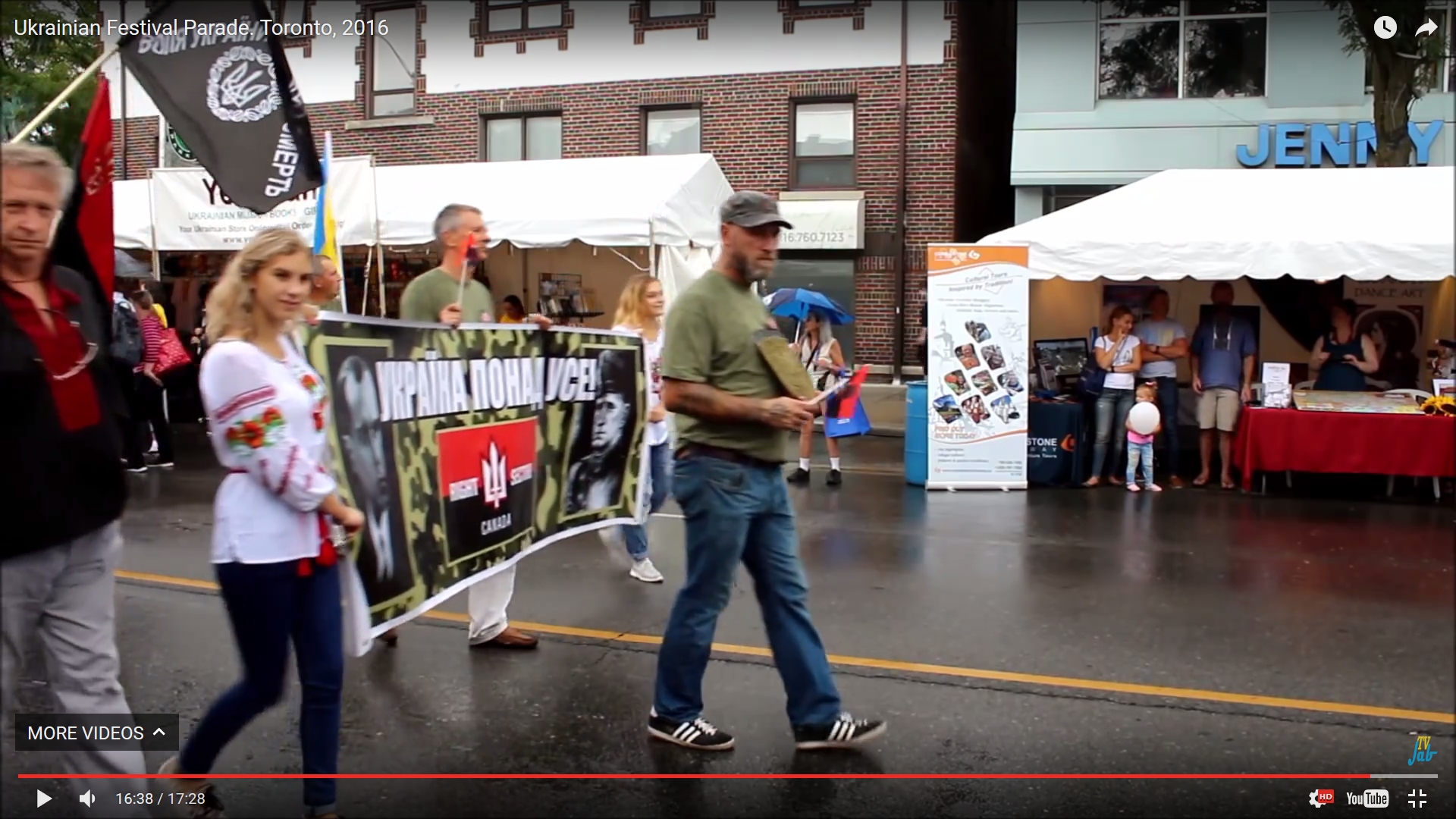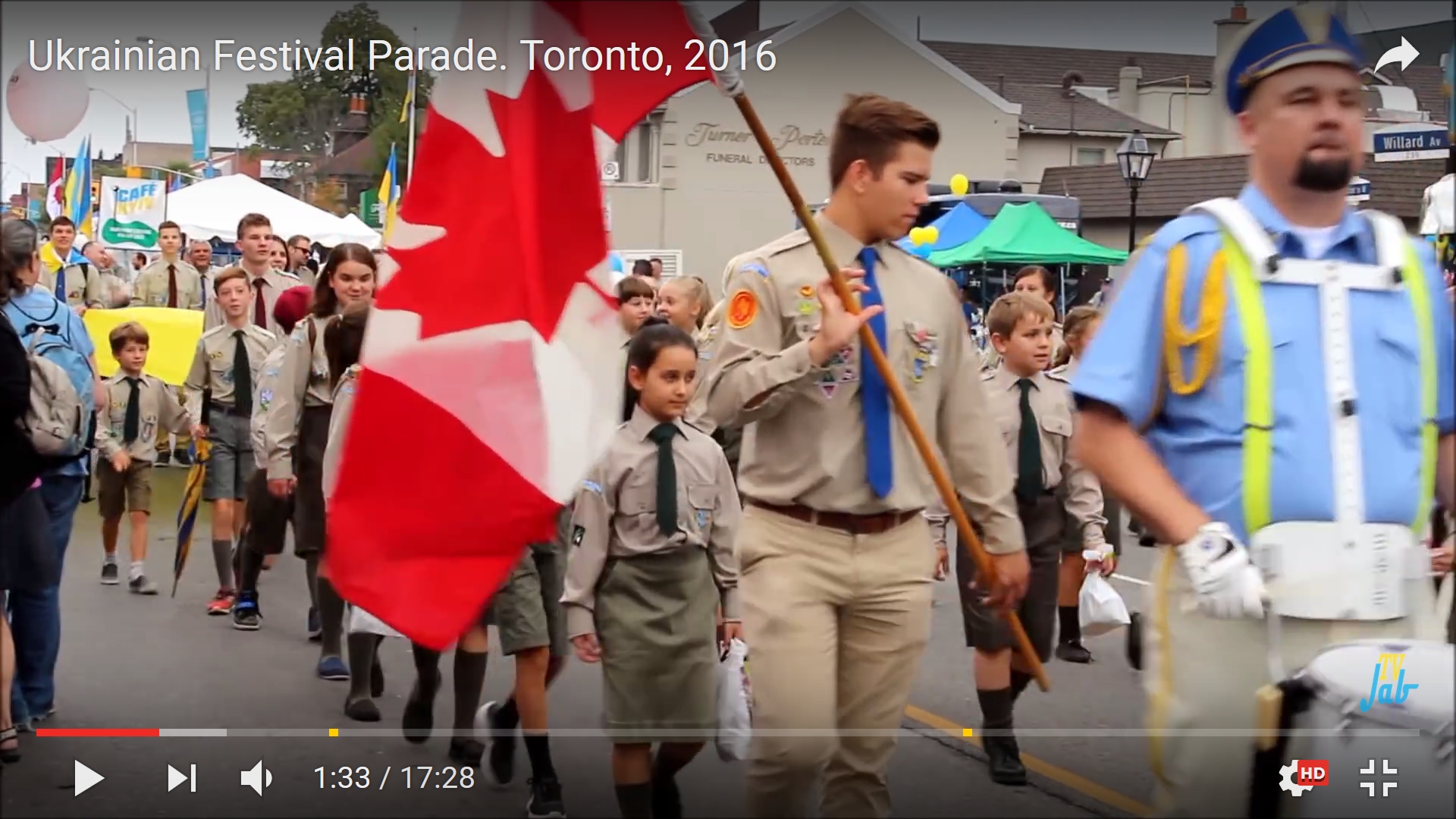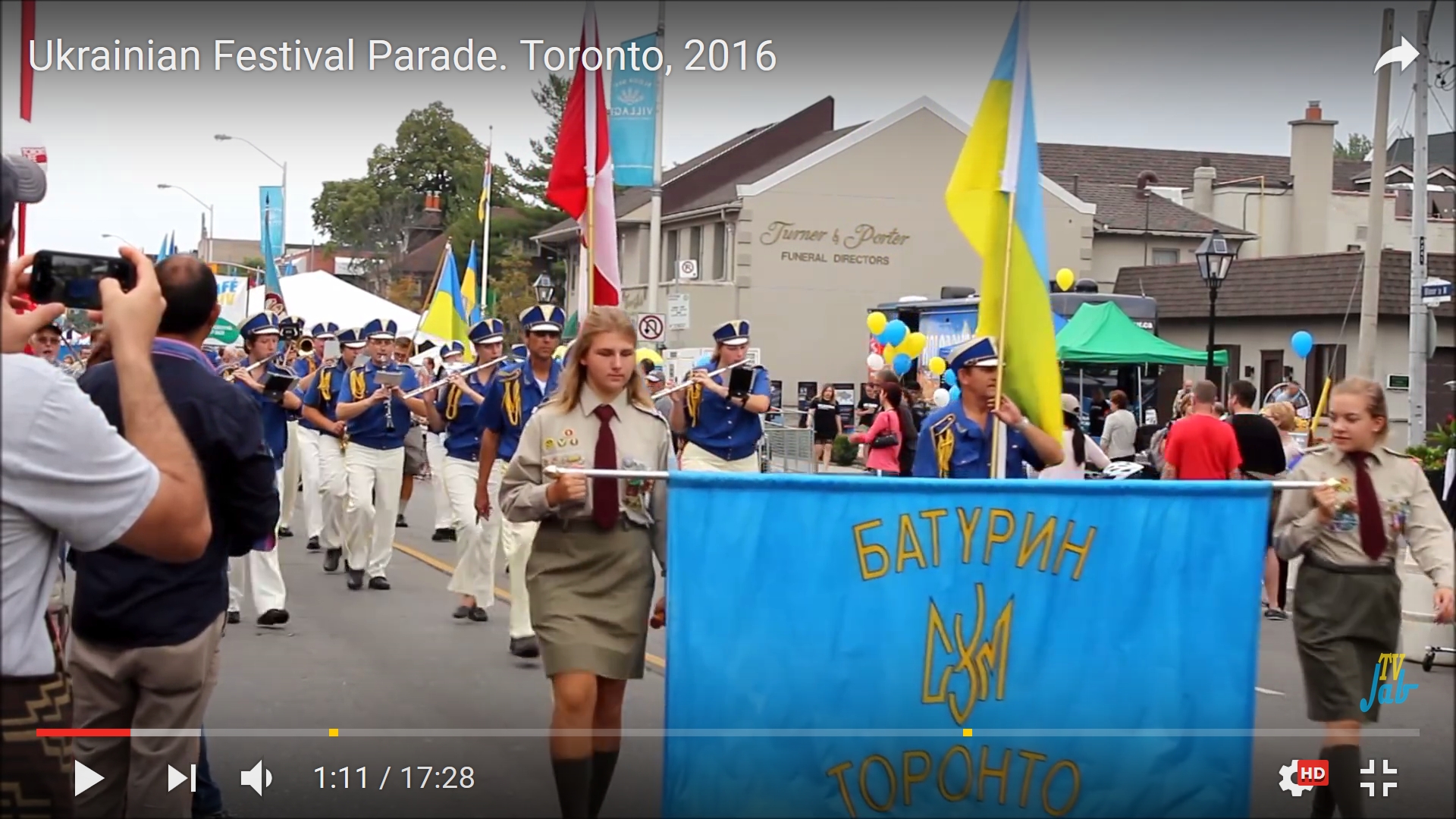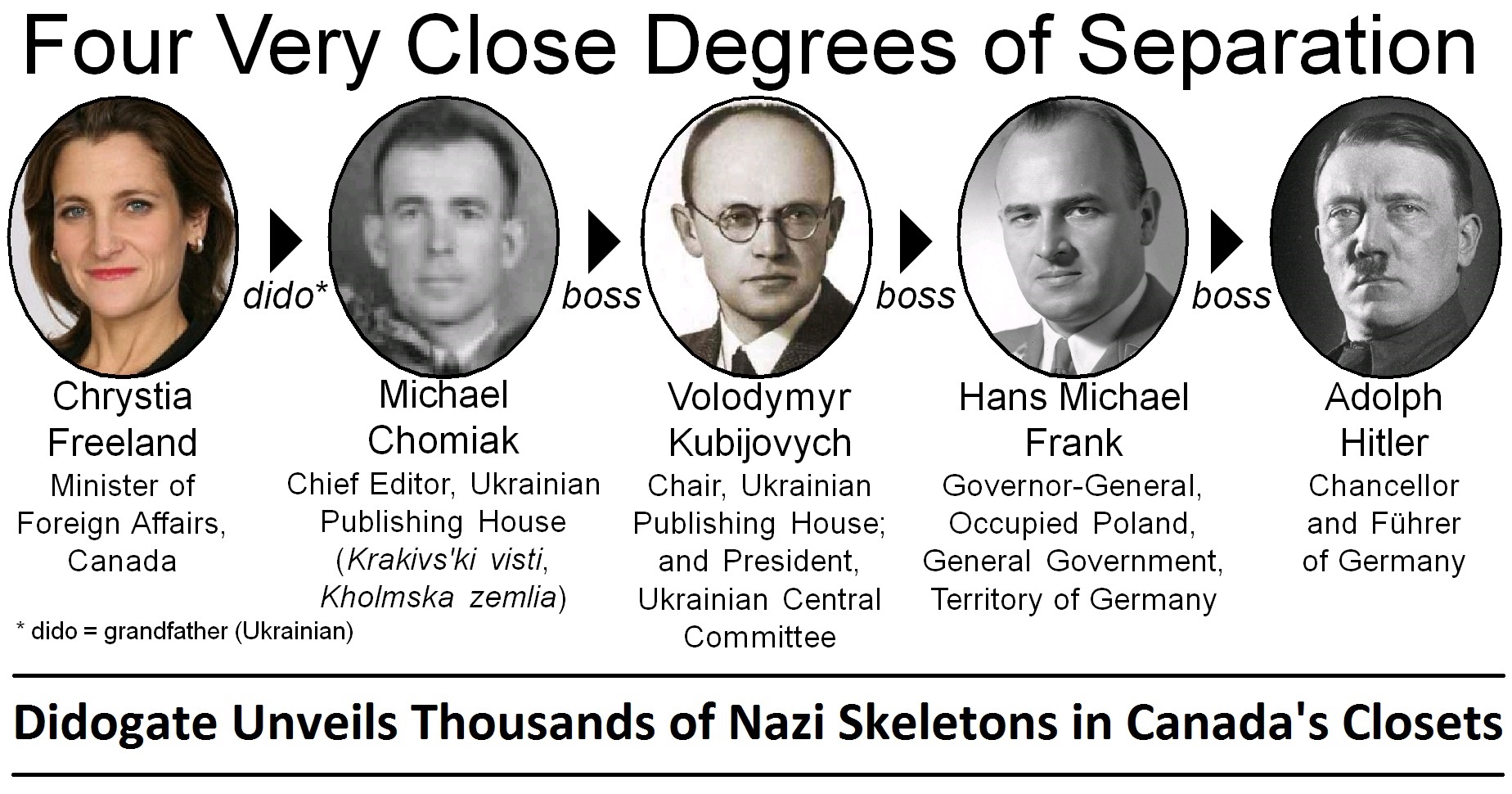
Minister Freeland's Grandfather,
Fake News,
|
|
|
By Richard Sanders, editor, Press for Conversion! magazine of the Coalition to Oppose the Arms Trade, March 22, 2017 "It takes a village to raise a Nazi" (old African proverb, slightly modified) |
|
|
1-
Introduction 2 - The Liberal Government's Warm Embrace of Ukraine's Nazi Collaborators 3 - Historical Amnesia and the Blinding Effects of Propaganda 4 - The Nazis as Victims? Sure, just Blame the Russians! 5 - Canada needs Truth and Reconciliation, not Denials and Obfuscation 6 - Historical Denial among Canada's ultranationalist Ukrainians 7 - Michael Chomiak, The Ukrainian Central Committee and its Nazi Newspapers 8 - Aryanisation and the "Mighty Wurlitzer" 9 - The Ukrainian Canadian Congress and its Fascist Roots 10 - Getting them Early: Building the ultraNationalist Cause among Children and Youth 11 - The Freeland-Chomiak Parallels in Advocacy Journalism 12 - Was Freeland an "Accidental Journalist," or Groomed for the Job? 13 - In 1989, Freeland was Declared an "Enemy of the Soviet State" 14 - A Chomiak-Freeland Fixation on Jewish Oligarchs running the Kremlin 15 - Freeland's Kremlin-Oligarch Theory goes Global with Jewish Plutarchetype 16 - Institutionalised Confidence Scams: An Open Conspiracy of Oligarchs, Politicians and Journalists 17 - Escaping the War Racket starts with Seeing the Elephant 18 - Just Following Orders? Which Orders? 19 - Is there a Bear in the Room? Kill it! 20 - The Collective Care and Feeding of Russophobia 21 - The Need for Truth and Reconciliation
If you appreciate the work that went into this research, please
subscribe &/or donate.
You can mail this
coupon
to COAT, or use the
Paypal link
on our homepage. Subscription prices:
Captive
Canada: This issue (#68) deals with the mass internment of Ukrainian Canadians, this community's left-right split and the mainstream racist, xenophobic anti-communism of progressive "Social Gospellers" (like the CCF's J.S. Woodsworth) who were so captivated by their false beliefs that they carried out the genocide of First Nations and turned a blind eye to government repression during the 20th-century "Red Scare." The main thesis is captured
here: |
Part 10
In 1977, at the age of nine, Freeland joined the Edmonton branch of the Plast scouting organisation. In 2013, when asked whether Plast had been influential during her childhood, Freeland responded: "Absolutely. Plast was a very important part of my life growing up and it is a very important part of my daughters’ lives. I grew up in a Ukrainian community and was active in Plast. Now my two daughters are active plastunky in New York (my son is only 3 years old). My elder daughter went to Lviv this summer for the 100th anniversary of Plast."[ii] Freeland joined Edmonton's Plast group in 1977 because that was the year that her mother, Halyna Chomiak Freeland, another intensely passionate Ukrainian nationalist, separated from her nonUkrainian husband and left Peace River, Alberta. Once in Edmonton, Chrystia was much closer to her mothers' father, Michael Chomiak, his five other children and their extended family. She also came under the influence of the very large Ukrainian community there, which comprises about 14% of that city's population.[iii]
In 1979, when Chrystia was eleven, she was interviewed by her maternal uncle Bohdan Chomiak, Michael Chomiak's son, for a radical Ukrainian nationalist newspaper called Student. In that publication distributed to Ukrainian university students across Canada, Bohdan asked Chrystia to compare the two core Ukrainian training programs in which she was enrolled. She replied that "historically, geographically and gramatically (sic) speaking ... you learned more in the Saturday school.... One of the biggest differences though is that the Saturday schools are much more patriotic and religious, so that history will have a lot of facts about how brave and gallant the Ukrainian kings were. And it will usually be stressed. Sometimes they'll talk about the negative points, but their perspective will be that of the Ukrainian nation."[iv] (Emphasis added.) Chrystia Freeland could not help but be deeply inspired, motivated and indoctrinated by such patriotic Ukrainian belief systems that she adopted through her all-pervasive, ultranationalist cultural programming. The powerful influences from her large Ukrainian family, the government's Ukrainian-language public school, the Ukrainian "Saturday School," the Ukrainian Catholic church in which her grandfather was very active, the Ukrainian scouting activities though Plast, other Ukrainian organisations, festivals and cultural events, as well as her Ukrainian friends, combined to have the desired effect.
All of this cultural conditioning from her
social upbringing has fostered Chrystia Freeland's personal commitment to, and
utter confidence in, the Ukrainian cause.
Through her hard work and unrelenting dedication, aided by her intelligence
and extremely confident command of language, Freeland has used her
undeniable chutzpah to become the most powerful and outspoken voice
for Canada's ultranationalist Ukrainian community. In 2013, when Freeland was the Liberal Party's "star candidate" running for election to parliament, she was honoured to be named the "Festival Parade Marshal" for Toronto's Ukrainian Festival. Sitting aback a vintage Cadillac convertible with her children, Freeland appeared near the beginning of the parade, right after the official banner (carried by children), a group of Ukrainian veterans and a military-style marching band. (Click the image of Freeland and children, above, to see a video of this parade. Freeland her family appear at 1:30. The Ukrainian Youth Association marching band and about 60 uniformed members of this Bandera youth group can be see at 21:30 in the video. This youth association is an official affiliate of the League of Ukrainian Canadians, which represents the Bandera faction of the Organisation of Ukrainian Nationalists in Canada.)
As an all-ages, family event, Toronto's
annual festival fulfills all that we might expect from such a celebration:
Ukrainian music, dancing, food, official participation by prominent Canadian
politicians from all levels of government representing the country's three
largest political parties. It has also included fundraising activities
for an ultraright-wing paramilitary organisation known for organising
extremely violent political protests in the Ukraine.
The 2016 Ukrainian parade had the
official participation of
As Toronto's Ukrainian festival and so many other similar cultural events across Canada ably demonstrate, the ultranationalist Ukrainian diaspora is alive and well in this country. This strong cultural community will no doubt continue to thrive under the protective support of the Canadian government's multiculturalism program and the mainstream media which also provides banal and largely uncritical coverage. One of the chief methods used to foster the continuance and growth of Ukrainian ultranationalist culture is the early inculcation of children and youth into the community's traditions and beliefs. This includes thinly-veiled institutionalised reverence for such fascist, antiSemitic Ukrainian war heroes as Stepan Bandera and the various organisations which carry the flame of Ukrainian ultranationalism. |
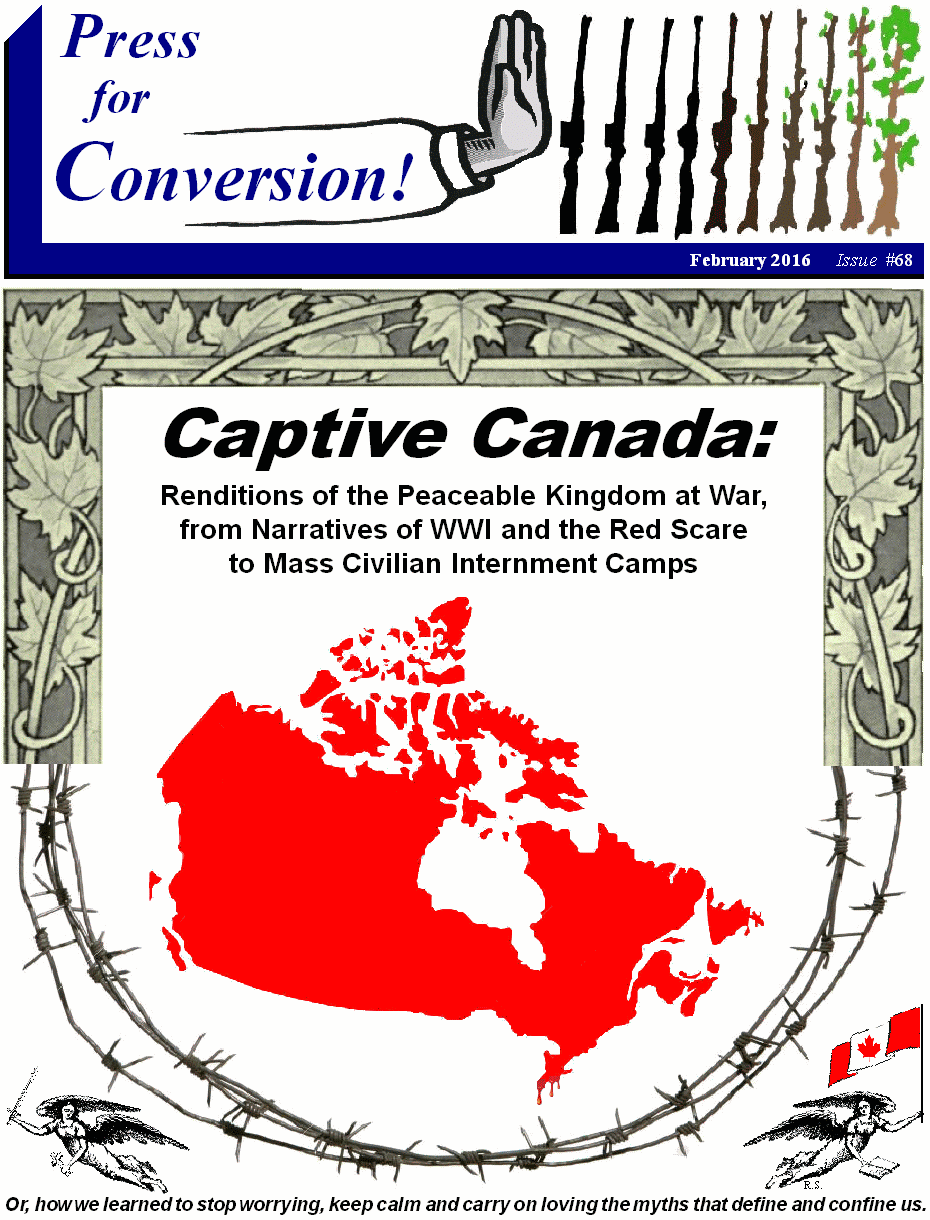
 As
children, Chrystia Freeland and her
friend Paul Grod (president of the Ukrainian Canadian Congress), like so many thousands of other ultranationalist
Ukrainians in Canada, were brought up through the tight ranks of
either the League of Ukrainian Canadians' Banderite youth organisation or a similar scouting group called the Plast Ukrainian Youth Association.
As
children, Chrystia Freeland and her
friend Paul Grod (president of the Ukrainian Canadian Congress), like so many thousands of other ultranationalist
Ukrainians in Canada, were brought up through the tight ranks of
either the League of Ukrainian Canadians' Banderite youth organisation or a similar scouting group called the Plast Ukrainian Youth Association.